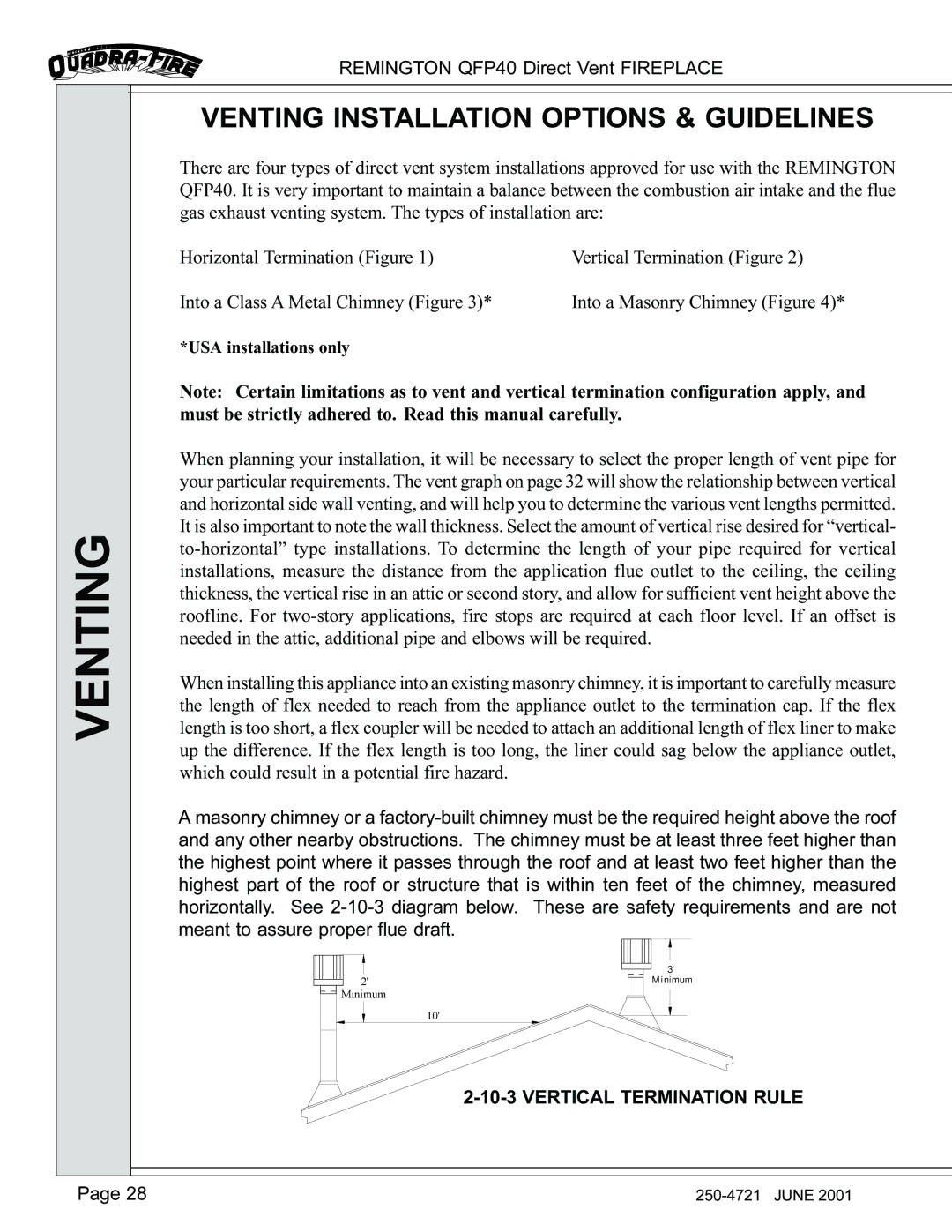
VENTING
REMINGTON QFP40 Direct Vent FIREPLACE
VENTING INSTALLATION OPTIONS & GUIDELINES
There are four types of direct vent system installations approved for use with the REMINGTON QFP40. It is very important to maintain a balance between the combustion air intake and the flue gas exhaust venting system. The types of installation are:
Horizontal Termination (Figure 1) | Vertical Termination (Figure 2) |
Into a Class A Metal Chimney (Figure 3)* | Into a Masonry Chimney (Figure 4)* |
*USA installations only
Note: Certain limitations as to vent and vertical termination configuration apply, and must be strictly adhered to. Read this manual carefully.
When planning your installation, it will be necessary to select the proper length of vent pipe for your particular requirements. The vent graph on page 32 will show the relationship between vertical and horizontal side wall venting, and will help you to determine the various vent lengths permitted. It is also important to note the wall thickness. Select the amount of vertical rise desired for “vertical-
When installing this appliance into an existing masonry chimney, it is important to carefully measure the length of flex needed to reach from the appliance outlet to the termination cap. If the flex length is too short, a flex coupler will be needed to attach an additional length of flex liner to make up the difference. If the flex length is too long, the liner could sag below the appliance outlet, which could result in a potential fire hazard.
A masonry chimney or a
3'
2'Minimum
![]()
![]() Minimum
Minimum
10'
2-10-3 VERTICAL TERMINATION RULE
Page 28 |
